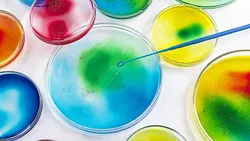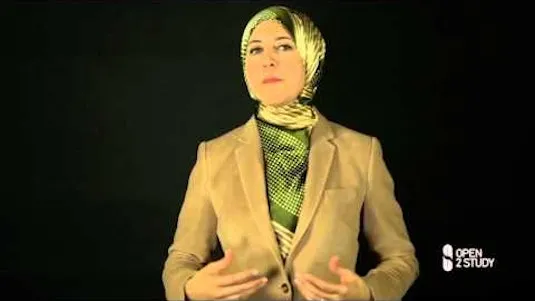
Microbiology Textbook 
Explore the essentials of Microbiology Textbook ▼
ADVERTISEMENT
Course Feature
![]() Cost:
Cost:
Paid
![]() Provider:
Provider:
Study.com
![]() Certificate:
Certificate:
Paid Certification
![]() Language:
Language:
English
![]() Start Date:
Start Date:
On-Demand
Course Overview
❗The content presented here is sourced directly from Study.com platform. For comprehensive course details, including enrollment information, simply click on the 'Go to class' link on our website.
Updated in [May 19th, 2023]
This Microbiology Textbook Replacement Course provides students with an engaging and interactive way to learn about the fascinating world of microbiology. Through short video lessons, students will explore the structure and function of microorganisms, the role of microbes in disease, and the importance of microbes in the environment. Quizzes and other activities are included to help students review and apply their knowledge. This course is a great way to get students excited about the subject and costs far less than a traditional textbook.
[Applications]
This course provides students with a comprehensive overview of microbiology, including the structure and function of microorganisms, their role in the environment, and their impact on human health. After completing this course, students should be able to identify and describe the major groups of microorganisms, explain the role of microorganisms in the environment, and discuss the importance of microorganisms in human health. Additionally, students should be able to explain the principles of microbial genetics and the use of microorganisms in biotechnology. Finally, students should be able to apply the knowledge gained in this course to real-world scenarios.
[Career Paths]
1. Microbiologist: Microbiologists study the growth, structure, development, and other characteristics of microscopic organisms such as bacteria, algae, and fungi. They use a variety of techniques to identify and classify these organisms, and they may also conduct research to understand how these organisms interact with their environment. With the increasing demand for new and improved medical treatments, the demand for microbiologists is expected to grow.
2. Clinical Laboratory Scientist: Clinical laboratory scientists are responsible for performing laboratory tests on patient samples to help diagnose and treat diseases. They use a variety of techniques to analyze samples, including microscopy, chromatography, and immunoassays. As the demand for more accurate and efficient medical treatments increases, the demand for clinical laboratory scientists is expected to grow.
3. Biomedical Engineer: Biomedical engineers use their knowledge of biology, engineering, and medicine to develop new medical treatments and technologies. They may design medical devices, develop new drugs, or create computer models to simulate biological processes. With the increasing demand for new medical treatments and technologies, the demand for biomedical engineers is expected to grow.
4. Bioinformatician: Bioinformaticians use their knowledge of computer science and biology to analyze and interpret biological data. They may develop algorithms to analyze large datasets, create databases to store biological information, or develop software to visualize biological data. With the increasing demand for new and improved medical treatments, the demand for bioinformaticians is expected to grow.
[Education Paths]
1. Bachelor of Science in Microbiology: A Bachelor of Science in Microbiology is a four-year degree program that focuses on the study of microorganisms and their interactions with the environment. Students learn about the structure and function of microorganisms, as well as their role in the environment, and how they can be used to benefit society. This degree is becoming increasingly popular as the demand for microbiologists grows.
2. Master of Science in Microbiology: A Master of Science in Microbiology is a two-year degree program that focuses on the study of microorganisms and their interactions with the environment. Students learn about the structure and function of microorganisms, as well as their role in the environment, and how they can be used to benefit society. This degree is becoming increasingly popular as the demand for microbiologists grows.
3. Doctor of Philosophy in Microbiology: A Doctor of Philosophy in Microbiology is a four-year degree program that focuses on the study of microorganisms and their interactions with the environment. Students learn about the structure and function of microorganisms, as well as their role in the environment, and how they can be used to benefit society. This degree is becoming increasingly popular as the demand for microbiologists grows.
4. Master of Public Health in Microbiology: A Master of Public Health in Microbiology is a two-year degree program that focuses on the study of microorganisms and their interactions with the environment. Students learn about the structure and function of microorganisms, as well as their role in the environment, and how they can be used to benefit society. This degree is becoming increasingly popular as the demand for microbiologists grows, as it is essential for public health professionals to understand the role of microorganisms in the spread of disease.
Course Provider

Provider Study.com's Stats at AZClass
Discussion and Reviews
0.0 (Based on 0 reviews)
Explore Similar Online Courses

How I made my own Character for UNREAL ENGINE 5

Colorado Real Estate Broker License Exam: Study Guide

Python for Informatics: Exploring Information

Social Network Analysis

Introduction to Systematic Review and Meta-Analysis

The Analytics Edge

DCO042 - Python For Informatics

Causal Diagrams: Draw Your Assumptions Before Your Conclusions

Whole genome sequencing of bacterial genomes - tools and applications

Microbiology and Forensic Science

Intro to Microbiology


Start your review of Microbiology Textbook